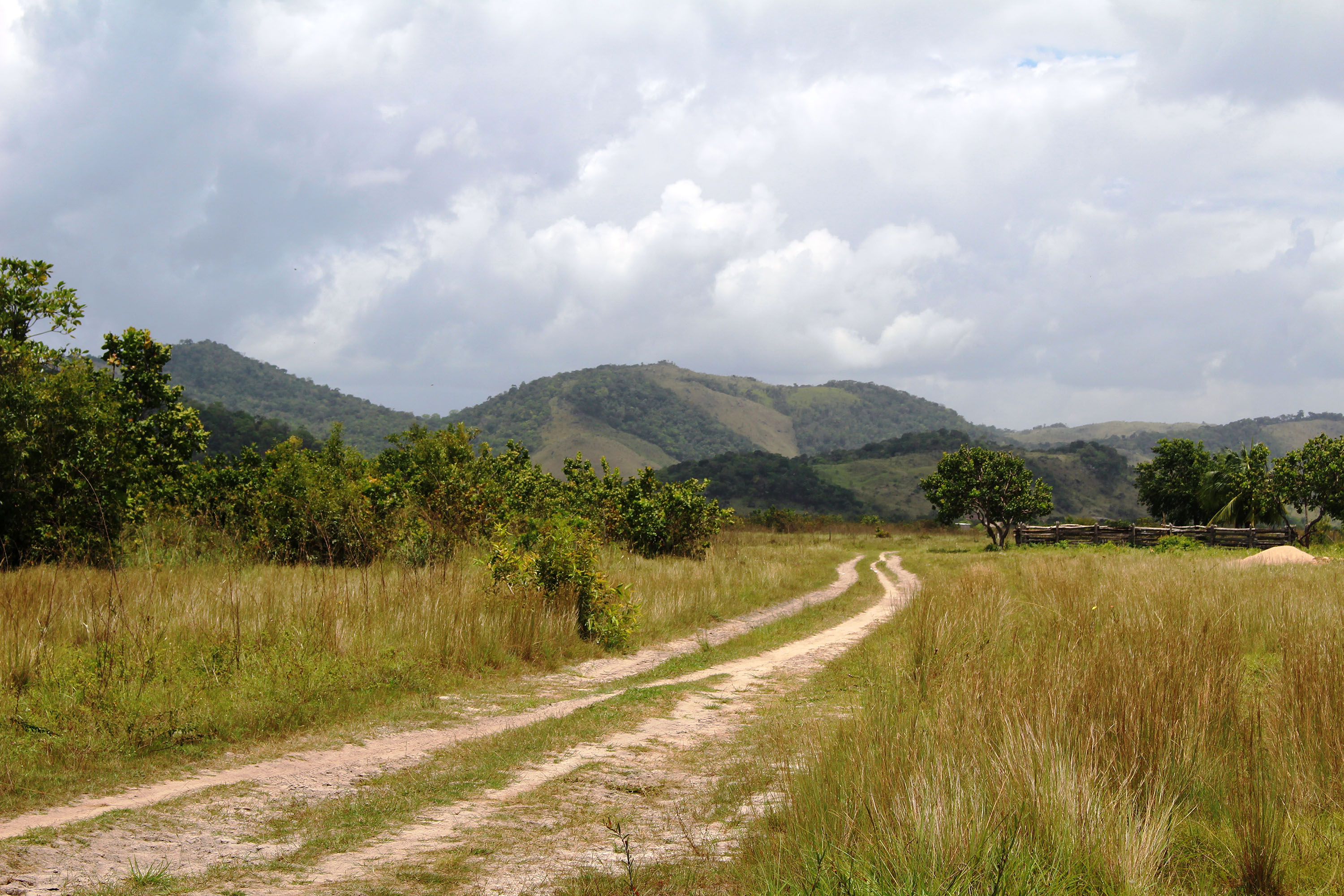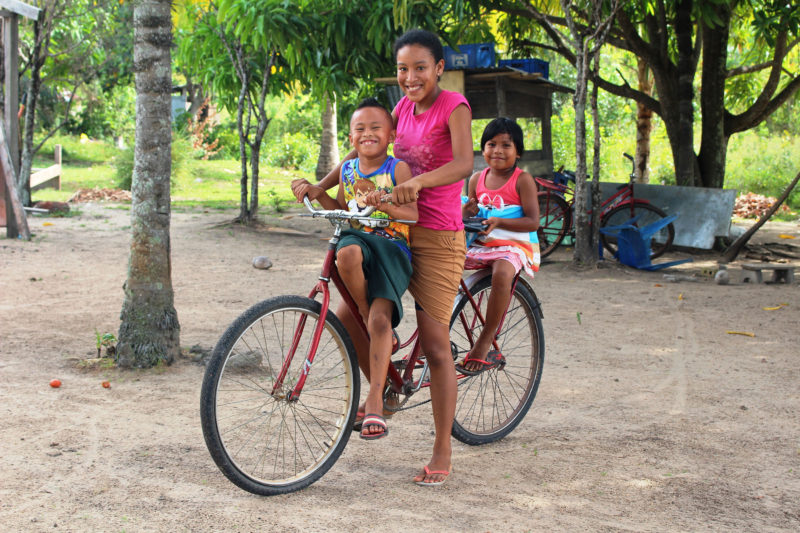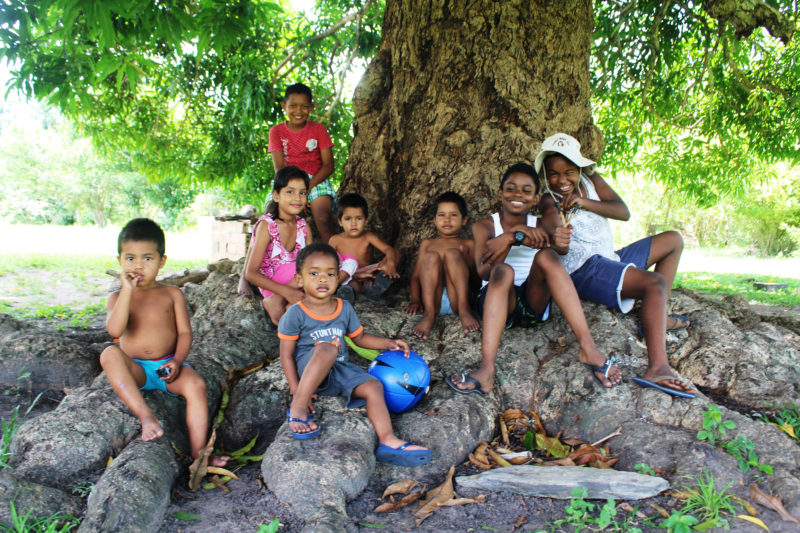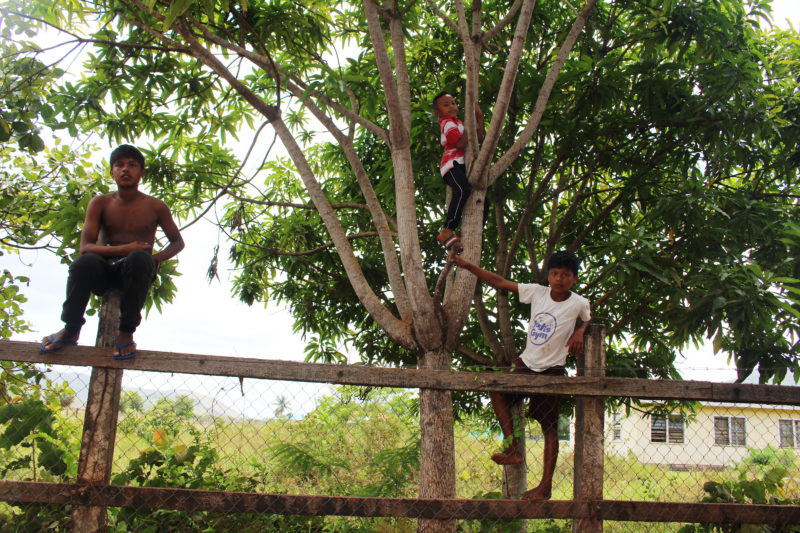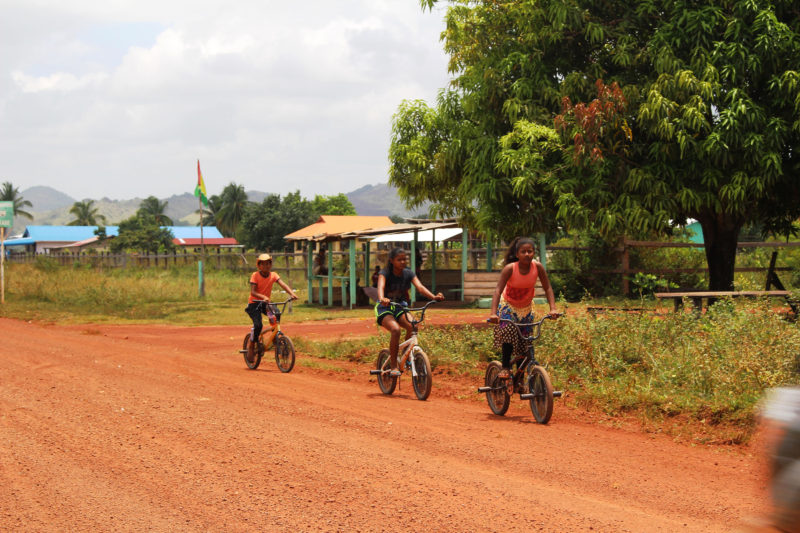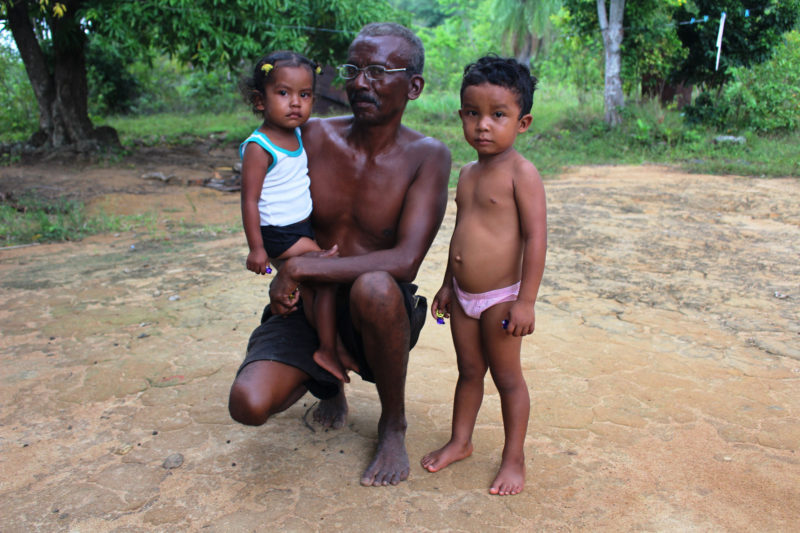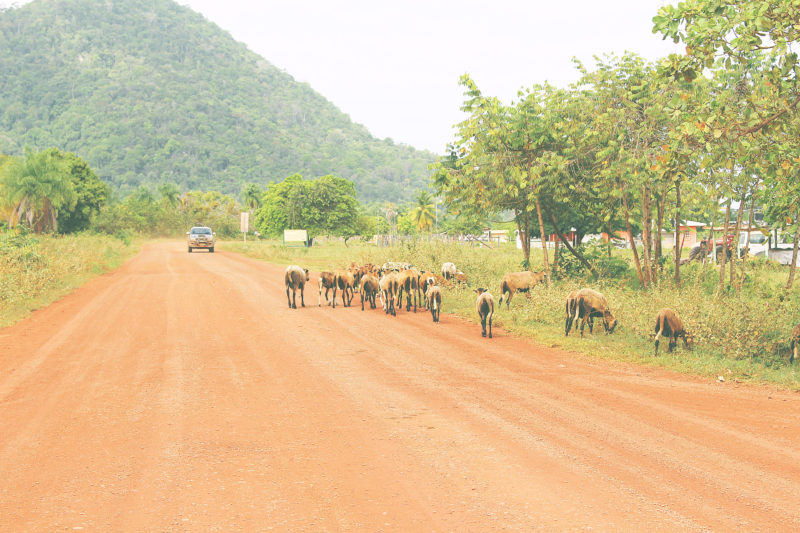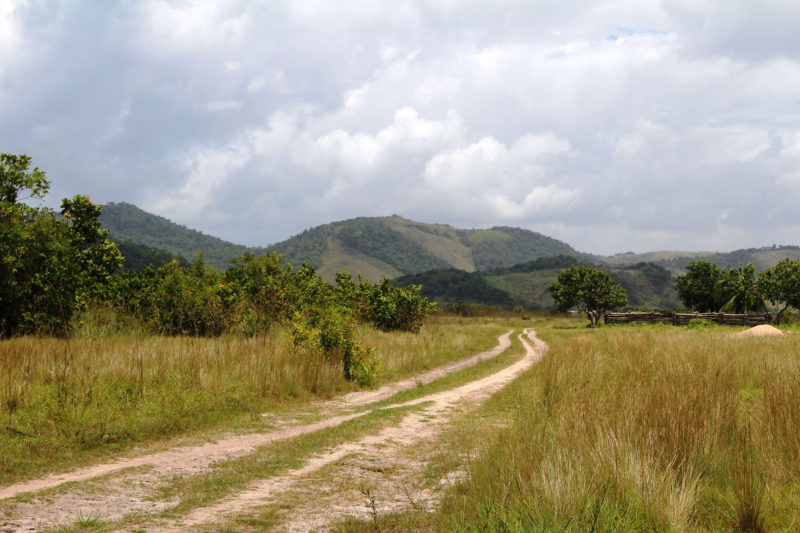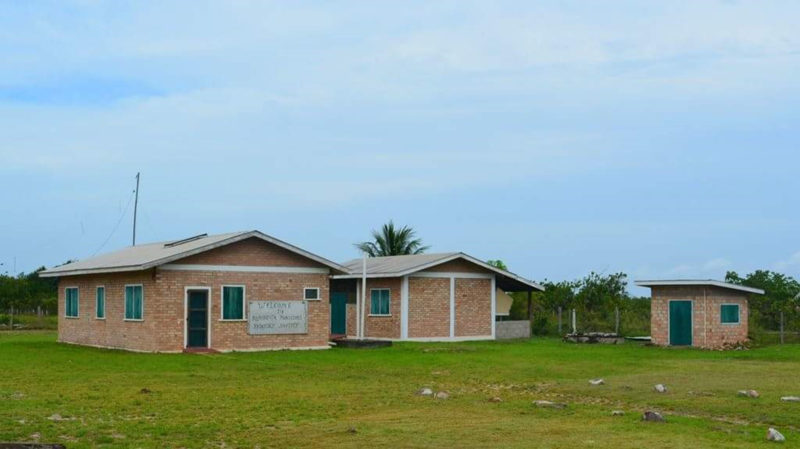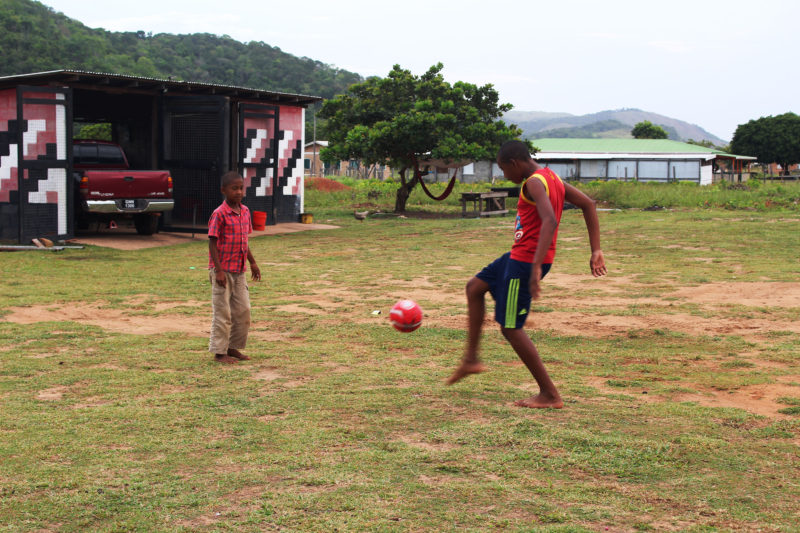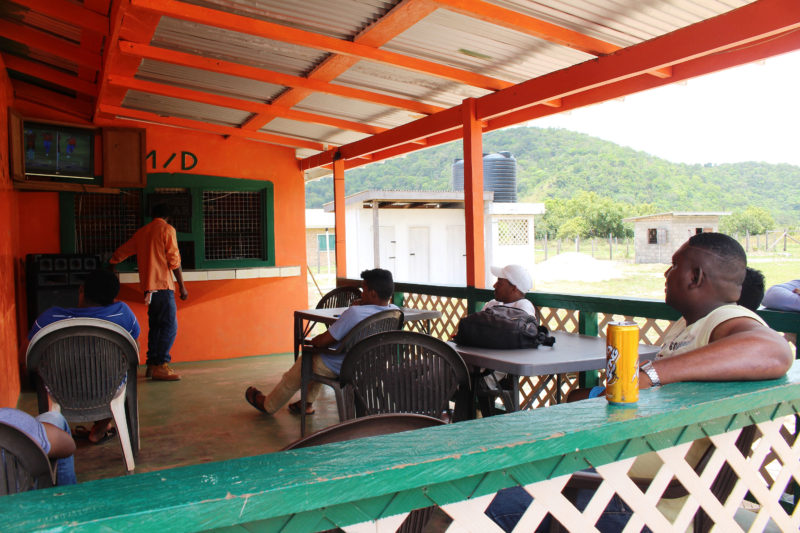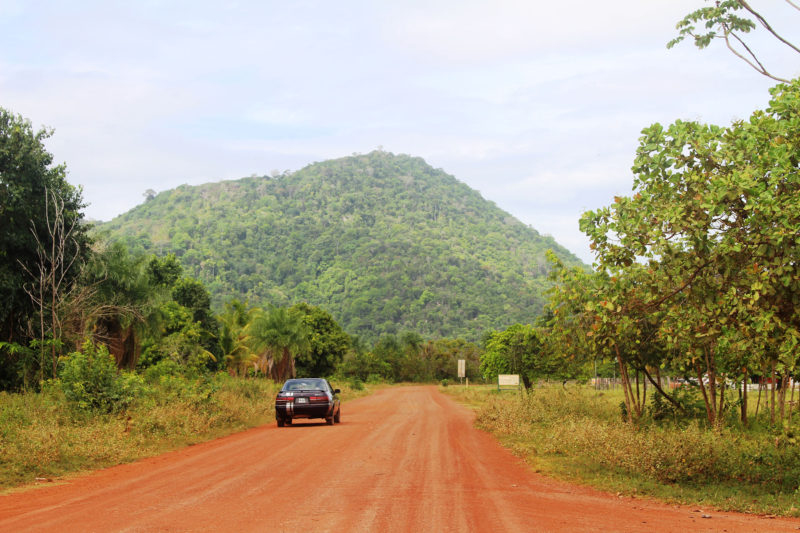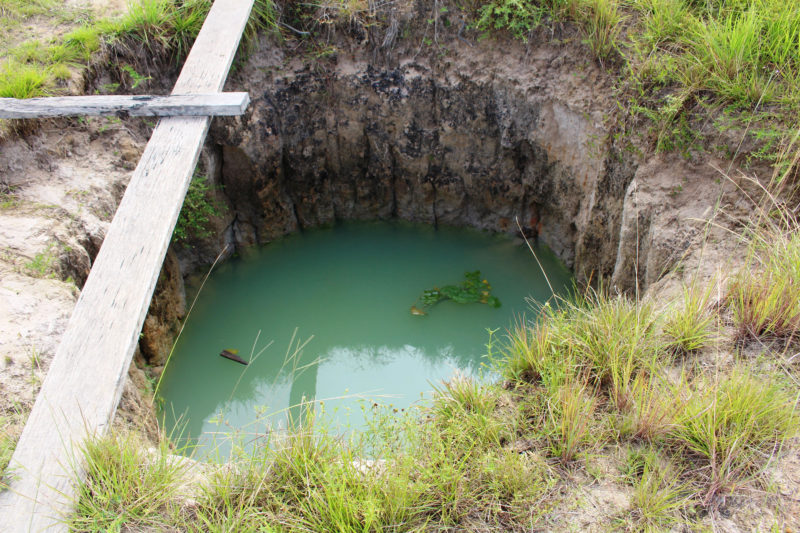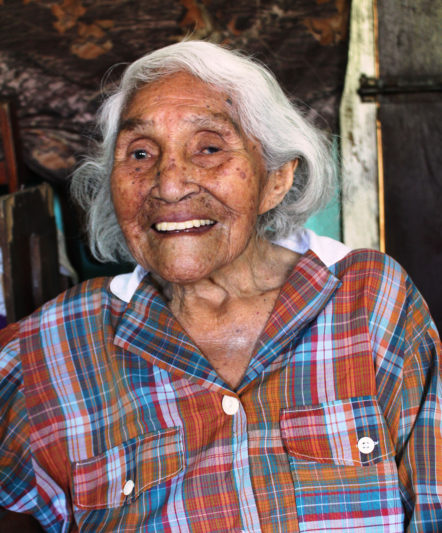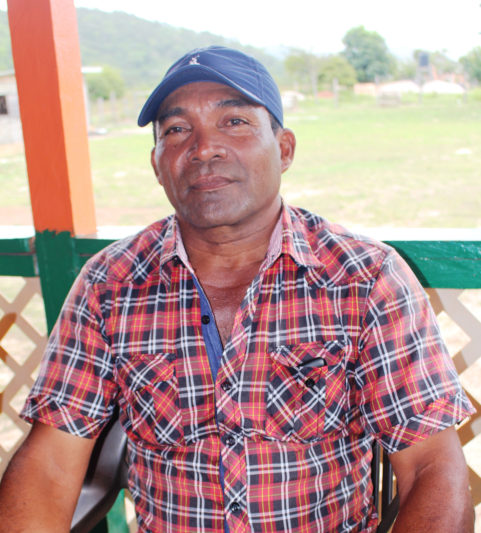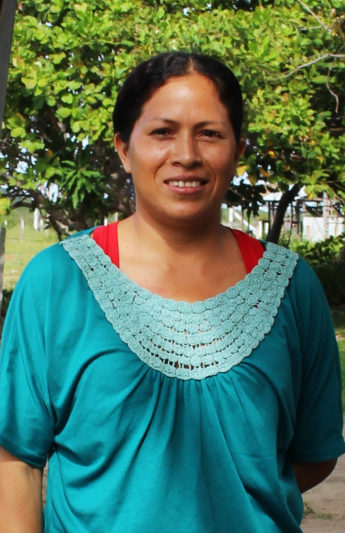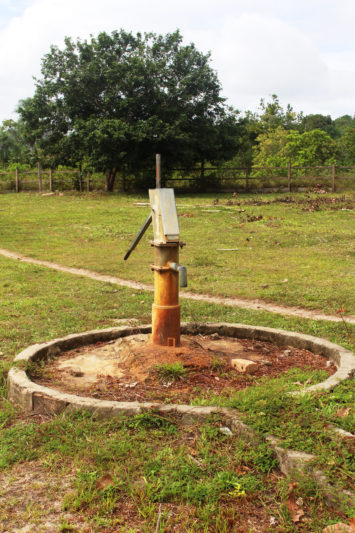Aranaputa Valley sits in the midst of the Pakaraima mountain range. The valley and Lethem are said to be the first two settlements in the Rupununi. Aranaputa is now home to 625 residents.
After arriving on the bus in Annai, I travelled by taxi to Aranaputa, which sits in a plain with houses scattered, some hidden among the trees away from the road leading to the forest.
With its red-brick road decorated with sheep, horses and pigs in some areas, and the Pakaraimas as the backdrop, where some of the peaks are covered by the fluffy whites floating above giving all of it a hazy dream-like look, Aranaputa is easily one of the most picturesque villages in North Rupununi.
Gillian Rodrigues was busy cleaning her basha fish when I caught up with her. Quickly covering them from the dogs around, she explained that Aranaputa is not an Amerindian settlement, though 80 percent of its residents are Macushis. The village is currently in transition mode from having its affairs administered by a Community Development Council to a Neighbourhood Democratic Council (NDC) and instead of being headed by a Toshao, it has a chairman in the name of Aiden Jacobus.
As one of the councillors, Rodrigues is responsible for the Tourism, Sports and Agriculture sectors. “Aranaputa is the village that does the most agriculture in the entire Rupununi,” she said. “We plant peanuts; we have a peanut factory. And we plant cassava and other ground provisions as well… greens too.”
She added that for tourists would hike along the nature trail, bird watch and talk about the various species of birds and trees. Visitors arrive from around the country, neighbouring Brazil, Venezuela, Suriname, the US, Canada, Uruguay, French Guiana and Germany. However, the woman indicated that within the last five years there has been a rapid decline in the industry, as a result of a lack of participation from residents of the village.
With regard to sports, she woman said the youths are very involved in football (the most common game) and cricket and on some afternoons find themselves in the community centre ground. They are well versed in track and field events also. The ground would usually host the annual inter-school sports and last year had the privilege of hosting the inter-branch events.
Our conversation led to life in the village and Rodrigues said most of the people settle closer to the mountains close to creeks as families are easier sustained by the water and fish.
Pointing a nearby well, she explained that the water was not as pure as required for cooking or drinking so she uses it for laundry purposes. The pump at the community centre ground provides potable water for her family and those living in proximity.
Rodrigues related that jaguars at times leave the mountains and venture into the village. She lost her dog to a jaguar and the village has lost 20 canines in total. “At one point the jaguar killed a sheep and left it covered to return for it later. The owner though followed the [bloody] trail found the dead sheep covered and waited in a tree that night. He shoot it when it returned for the sheep,” she related.
She added that jaguars are not usually killed as they are protected. However, when raids become rampant they had no other choice but to put the big cat down. Since then they have not had another dog go missing so it seems as if was just that one jaguar responsible for the killings.
“We enjoy living here; we’re a simple and contented people. Sometimes we go fishing in the Rupununi River like 12 miles from here. We have our own kitchen gardens and we mind creole chickens for eggs and meat. We get just about all the groceries here at the shops but because people bring them all the way from Georgetown, we pay a little more than usual,” Rodrigues said.
The business sector, she said, is developing rapidly. Sometime ago the village had just one shop; it now has a few more and a restaurant as well.
Rodrigues said, “We would like to see more development in the sports, livestock and education sectors. Education is a priority in the village and many times we don’t have access to the internet especially for our children writing the NGSA and the CXC exams. Sometimes they have to travel to Colin’s [a private place situated two and a half miles away]. Another thing to stress on is our teachers; they aren’t trained, the majority aren’t. Teachers who want to be trained have to travel all the way to Georgetown.”
While Aranaputa has a nursery and a primary, it has no secondary schools and the older children usually cycle three villages away to Annai Secondary situated at Bina Hill in Kwatamang.
Shopkeeper and farmer Arnold Hamilton sat in the shade of his shop. Born and bred in Aranaputa, Hamilton was excited about the village becoming an NDC and added that the village was originally demarcated for settlers from Georgetown.
“Growing up as a boy, we hadn’t access to modern amenities. We had a lot of organic food: cow milk, beef, potatoes, vegetables and ground provision. Today the children… most persons depend on the shop. Children today prefer to go into business instead of farming. Children would now be ashamed to wear a warashi (an oblong basket that is attached to the head and worn down the back),” he said.
In terms of schooling, he said today’s children are at an advantage unlike yesteryear. He’s a big believer when it comes to education and sought every means to see his children educated. He has five children, one of whom is Dr Shellon Hamilton employed at the Georgetown Public Hospital Corporation. Another is a therapist, a third is studying Environmental Science at the University of Guyana, the fourth is a civil engineer and his youngest is currently at home with him working in the shop, but plans on starting his own business a few years down the road.
The peanut farmer has his farm situated almost two miles from his residence. At one point planting peanuts served as his main source of income. “….peanut has declined. I think it’s because the nuts from China are cheaper on the market. We had once requested from the [previous] government to stop importing peanut butter, but they said there was nothing that could be done,” he said.
Hamilton added that sometime ago the village produced more than 100,000 pounds of peanuts annually. However, as of last year he doubted the village produced anything more than 10,000 pounds of peanuts.
Apart from peanuts, Hamilton plants sweet and bitter cassava, but those are mainly for home use. Years ago, he said, they cultivated rice and planted black tobacco and brown-leaf tobacco which they sold to Georgetown. Hamilton’s father, Oliver Hamilton, one of the first settlers to arrive in the village, taught the people to cultivate rice and tobacco.
As much as the peanut factory is struggling, Hamilton said, Aranaputa is still a hub; many persons brave the unforgiving sun and miles of cycling to purchase groceries there.
“Cassava is our staple diet. Sometimes we find that we don’t have the demand. We need better market for cassava and farine. The government can help with providing a market for our peanuts by not importing the foreign peanut butter. We could sell at a cheaper price and yet make a profit but in order to do so we’d have to increase on our productivity which will only come when the demand goes up,” Hamilton said.
Fifty-four-year-old Kenneth Ford was inside his house tending to his two young children when I turned up at his residence but was eager to talk and shared as much as he could beginning with how the village came to exist.
“Aranaputa is a Macushi word. ‘Arana’ meaning thick forested area and ‘Putsa’ meaning something on fire,” he related. “When the British met the Amerindians living here and asked the name of the village, the Macushis said ‘Aranaputsa’ but the British left out the ‘s’ in the word and because of this it’s been called Aranaputa ever since.
“The village is surrounded by thick forest but in the very dry weather it leads to fires. When we have El Nino, we get forest fires. The last was more than three years ago.”
Ford, who is half Amerindian, grew up with his mother and grandmother and over the years lived for the stories of the settlers arriving through the Cattle Trail, one very important one, his father, Jerome Ford.
The first settlers arrived in 1935 from the coastland, Oliver Hamilton, Bosen Sears and others from Berbice bringing their families with them. The second batch came in 1947 and included Jerome Ford, Peter Dookram and others. The last surviving pioneer of Aranaputa to have come through the Cattle Trail was Rudolph Abraham.
“My father was from Pike Street, Kitty and Mr Dookram from Bartica. My father had just finished writing the Farrow Cambridge at QC,” Ford said. “At that time the British had just opened the State of Rupununi and they had just finished the Cattle Trail. Rupununi then was considered both regions eight and nine. My father, only 18 then, heard of the leases they were offering and took up the offer.”
Most of the coastlanders, after arriving in Aranaputa, took native wives.
Jerome Ford’s journey started in Georgetown aboard a train to Rosignol, Berbice, followed by a steamer across the Berbice River to Tacama then the tedious journey began where the settlers footed it to the Rupununi through numerous creeks and ravines with makeshift bridges and logs thrown across them and over mountains arriving a tiring 13 days later.
The Annai Airstrip was constructed in 1947 by settlers living in Aranaputa. This project was led by Oliver Hamilton and Martin Lashley. The first plane to land was the Dakota which took beef and tobacco to Georgetown.
In those days, cattle rearing bloomed and the Rupununi was considered the cattle capital of Guyana. According to Ford all livestock of genetic material and other necessary livestock input were acquired from neighbouring Brazil. However, all of the importing was banned after the outbreak of the Foot and Mouth disease.
After becoming village chairman (2009-2015) Ford said, “I personally requested from president Bharrat Jagdeo and [Donald] Ramotar when he became president and our present Agriculture Minister [Noel Holder] to allow animals to be imported again providing they are properly screened but was turned down. We have four Brangus Bulls that were bought from a dealer in Georgetown. The bulls belong to the village council.”
At present, Aranaputa has more than 700 head of cattle, compared to more than 2,000 in the 1960s and 70s. They rear some of amount of sheep and poultry as well.
Ford said the peanut butter factory was opened sometime in 2010, with him being one of the founding members. The facility belonging to the community was funded by the Foundation for International Development Assistance and the US Agency for International Development, while the plot of land was donated by Peter Dookram’s wife.
“When the idea was conceptualized it was to take off all the nuts from the farmers so they can have a market. We are working hard to correct it. The facility has deviated from the purpose it was solely put up for. It’s more than six years now since we’ve had a financial report from the facility,” Ford said.
However, it has been rumoured by persons working at the facility which contributes to providing peanut butter and packaged cassava bread to schools in the North Rupununi area that the factory is owed large sums of money by officials responsible for the project and orders have significantly dropped as Peter Pan peanut butter is much sought after, since it comes at a cheaper price.
The village no longer depends on peanut butter as the main income generating activity, but looks to lumber sales instead. The village has a concession at the back of the village while a number of its residents are also members of the Rupununi Timber Association, which has another concession outside of the village so they are benefiting from both concessions.
Nevertheless, Ford said Aranaputa is a relaxed village where you can sleep peacefully at night. Most of the residents have ten acres of land each, some have even more and those closer to road have smaller plots. The village consists mostly of farmers and loggers. The village has a vast forested land and several fish ponds and fishing lakes, two of the largest being Big Pond and Perimoco. The farmers usually farm at the main farming area called Kurribu about five kilometres off the main road. However, getting there proves difficult with the trail being in a deplorable state from over use after a decade. “We are working with this government for the trail to develop. We would like to see the entire five kilometres in laterite. It would ensure security and make life easier where the vast majority are low income families.”
Ford added that there remains a disparity between the “haves” and the “haves not” which he said can be found among the Amerindian section of the low income and continued that he wishes to see a continuous income generating activity in that section of the community. Being a part of the council it is his motto to create possibilities for the vulnerable section of his community.
A little distance away, I found the cheerful 94-year-old Ella Hamilton, who smiled shyly when she learnt her photo was being taken for the newspapers.
Om what would be her front lawn, lies the grave of her beloved husband Thomas Hamilton who died when he was 94; had he been alive today, he would have been 107 years old. Although, the village has a cemetery way at the back, the people have grown accustomed to burying their loved ones on their plots of land. However, they’re trying to desist from this custom since it’s against the law to do so.
Back out on the road some boys clambered all over a mango tree for the sheer joy of climbing as there were no mangoes on the tree. Some residents sat chatting under a bus shed shielding their faces from the dust whenever a bus sped by and children happily chattered while riding along the scenic red road.
